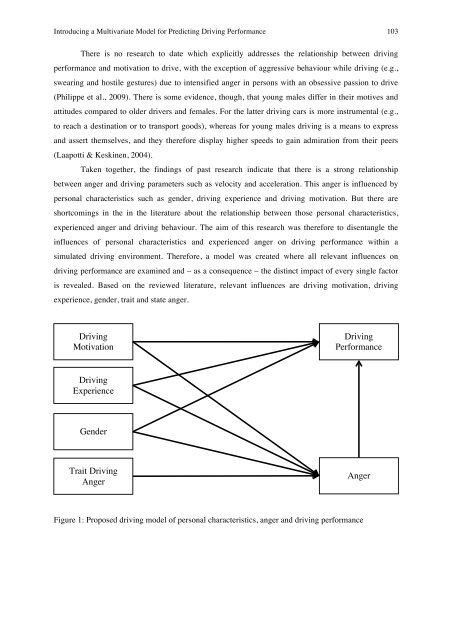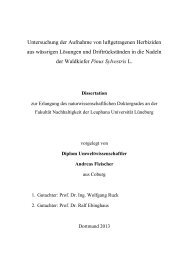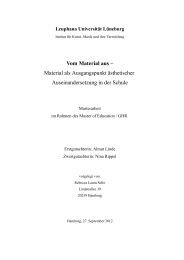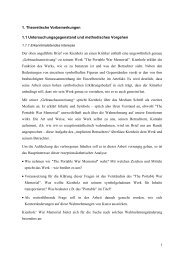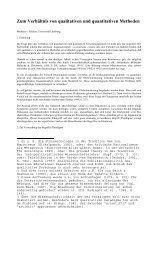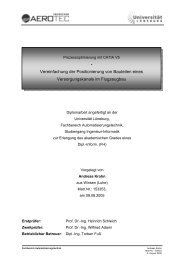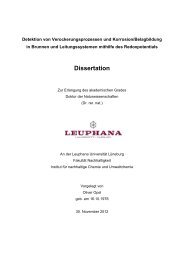Determinants of Emotional Experiences in Traffic Situations ... - OPUS
Determinants of Emotional Experiences in Traffic Situations ... - OPUS
Determinants of Emotional Experiences in Traffic Situations ... - OPUS
Create successful ePaper yourself
Turn your PDF publications into a flip-book with our unique Google optimized e-Paper software.
Introduc<strong>in</strong>g a Multivariate Model for Predict<strong>in</strong>g Driv<strong>in</strong>g Performance 103<br />
There is no research to date which explicitly addresses the relationship between driv<strong>in</strong>g<br />
performance and motivation to drive, with the exception <strong>of</strong> aggressive behaviour while driv<strong>in</strong>g (e.g.,<br />
swear<strong>in</strong>g and hostile gestures) due to <strong>in</strong>tensified anger <strong>in</strong> persons with an obsessive passion to drive<br />
(Philippe et al., 2009). There is some evidence, though, that young males differ <strong>in</strong> their motives and<br />
attitudes compared to older drivers and females. For the latter driv<strong>in</strong>g cars is more <strong>in</strong>strumental (e.g.,<br />
to reach a dest<strong>in</strong>ation or to transport goods), whereas for young males driv<strong>in</strong>g is a means to express<br />
and assert themselves, and they therefore display higher speeds to ga<strong>in</strong> admiration from their peers<br />
(Laapotti & Kesk<strong>in</strong>en, 2004).<br />
Taken together, the f<strong>in</strong>d<strong>in</strong>gs <strong>of</strong> past research <strong>in</strong>dicate that there is a strong relationship<br />
between anger and driv<strong>in</strong>g parameters such as velocity and acceleration. This anger is <strong>in</strong>fluenced by<br />
personal characteristics such as gender, driv<strong>in</strong>g experience and driv<strong>in</strong>g motivation. But there are<br />
shortcom<strong>in</strong>gs <strong>in</strong> the <strong>in</strong> the literature about the relationship between those personal characteristics,<br />
experienced anger and driv<strong>in</strong>g behaviour. The aim <strong>of</strong> this research was therefore to disentangle the<br />
<strong>in</strong>fluences <strong>of</strong> personal characteristics and experienced anger on driv<strong>in</strong>g performance with<strong>in</strong> a<br />
simulated driv<strong>in</strong>g environment. Therefore, a model was created where all relevant <strong>in</strong>fluences on<br />
driv<strong>in</strong>g performance are exam<strong>in</strong>ed and – as a consequence – the dist<strong>in</strong>ct impact <strong>of</strong> every s<strong>in</strong>gle factor<br />
is revealed. Based on the reviewed literature, relevant <strong>in</strong>fluences are driv<strong>in</strong>g motivation, driv<strong>in</strong>g<br />
experience, gender, trait and state anger.<br />
Driv<strong>in</strong>g<br />
Motivation<br />
Driv<strong>in</strong>g<br />
Performance<br />
Driv<strong>in</strong>g<br />
Experience<br />
Gender<br />
Trait Driv<strong>in</strong>g<br />
Anger<br />
Anger<br />
Figure 1: Proposed driv<strong>in</strong>g model <strong>of</strong> personal characteristics, anger and driv<strong>in</strong>g performance<br />
!


